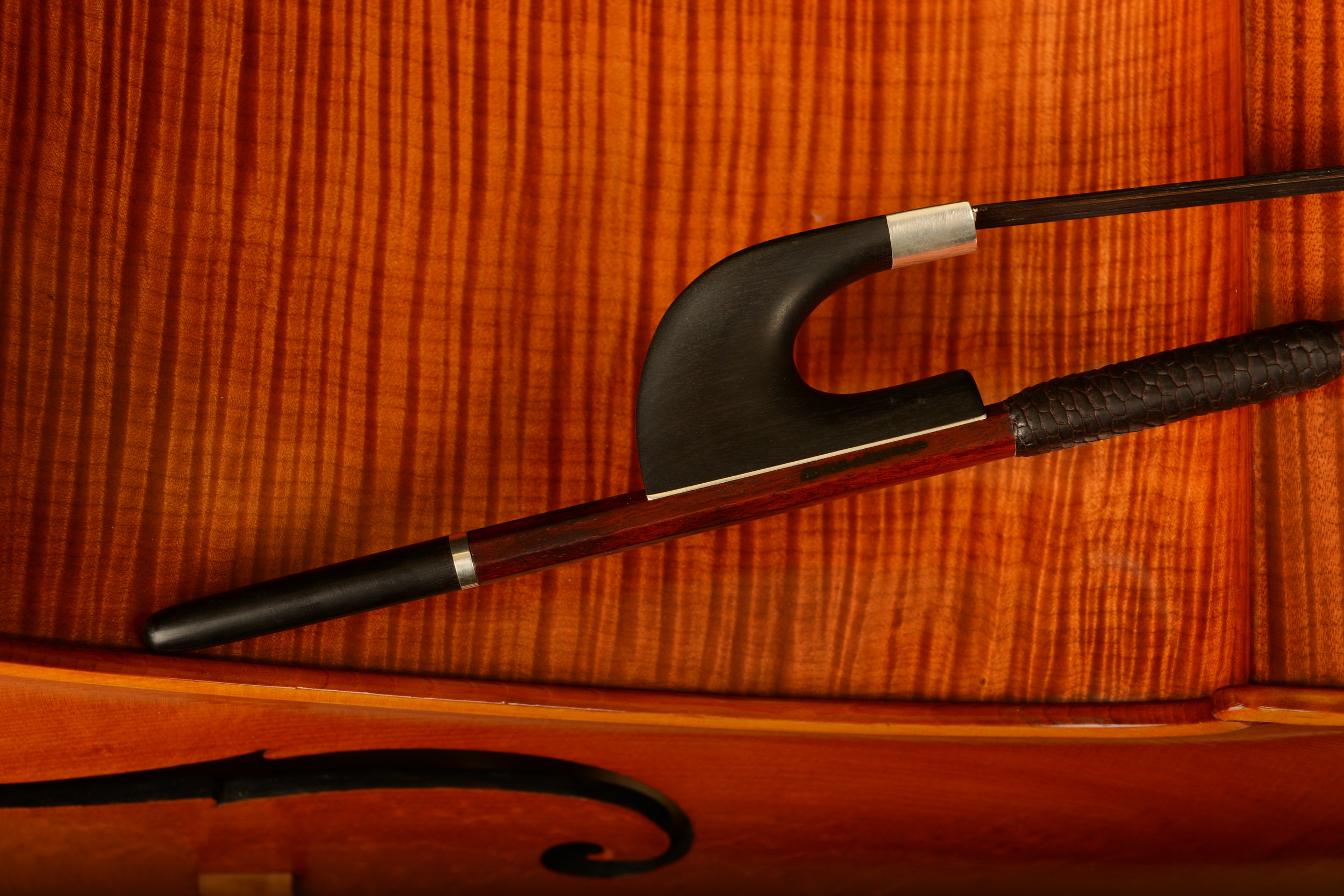Fifths Tuning
by Silvio Dalla Torre
...it was conceived from the beginning as a member of the violin family with the basic idea of a clear powerful tone and the fifths tuning C-G-D-A
It is thanks to the extensive research of the French double bass player Paul Brun that the role and function which the double bass has acquired over the course of time can now be discussed afresh. He takes the view that the double bass was not originally a hybrid of the viol and the violin families of instruments, but that it was conceived from the beginning as a member of the violin family with the basic idea of a clear powerful tone and the fifths tuning C-G-D-A. According to Brun, this tuning was only abandoned because of the inadequate quality of the strings and the requirement for very frequent position changes which arise from the size of the instrument. (Nevertheless it has, at least in variants, survived for more than 300 years and has over and over again been described, for example by the inventor of the saxophone, Adolphe Sax, as the better tuning).
Red Mitchell (1927-1992)
And in fact, the still small (but ever growing) number of double bass players who are contributing to a Renaissance of the fifths tuning experience a fascinating "liberation" of their instrument. The American jazz bassist Red Mitchell was the first double bass player of recent times to experiment with it. Oddly enough, it was experiments with a violoncello tuned in fourths that first put him onto the scent of what was then considered to be the "new tuning": He noticed that the sound of the cello was not so good when it was tuned in fourths, and drew from this the conclusion that the sound of the double bass might be correspondingly improved if it was tuned in fifths. He proved to be right in his suspicions, and was so delighted with the open, resonant sound of the instrument and the possibility of producing the contra C without using a five string instrument or a complicated mechanism, that he immediately altered his technique. Certainly, as an improvising jazz musician, he had the advantage compared to his classical colleagues that he was not limited to a prescribed musical text. Among these, the Canadian Joel Quarrington was a pioneer who at first "just wanted to see what life was like without an extension". Of his experiences with the fifths tuning, he wrote: "The physics are different when you tune in fifths because you are in the same groove as the rest of the string section." It is Quarrington´s opinion that it is only with the fifths tuning that harmonic intonation can be achieved within the string ensemble: "The bass in fourths is impossible to tune – if you make the fourths perfect your low string will be too flat and of course will not relate to the open strings of the other instruments, just because it´s turned upside down."
The American double bass player Dennis Masuzzo may have been the first to publish a thorough, systematic introduction to playing the fifths-tuned double bass: "Playing the Double Bass Tuned in Fifths C-G-D-A" (2004). In this, he describes his first impressions: "I experimented with fifths tuning on an inexpensive plywood bass. There was a consonant overtone resonance of open strings and harmonics
I had never experienced – I was hooked."
It is actually difficult not to write enthusiastically about the fifths tuning, because its other advantages in addition to the tonal ones are so clear:
only one instrument is needed for the whole orchestral, solo and chamber music repertoire. It is not necessary to have one double bass in E-A-D-G, another in F#-B-E-A and where possible also a five-string instrument.
the original literature of solo works written before 1800 can be realised significantly better than with the fourths tuning.
you always play in C, there is no more transposition, as with the solo tuning.
Of course the fifths tuning also has disadvantages. Double-stopping seconds and thirds is difficult to realise (while fourths, fifths and sixths sit better then with the fourths tuning, and even sevenths can be played as double stops), and some keys are not very advantageous. A further disadvantage derives not so much from the tuning itself as from the chequered history of the double bass, and the inconsistent systems. Works that were written specifically for the fourths-tuned solo double bass are sometimes difficult to play in fifths tuning, and sometimes impossible (although Quarrington demonstrated impressively with his first CD that it is possible, at least for him, to play Bottesini).
Only with the traditional fingering are more changes of position necessary (when using the four-finger technique, it is less rather than more), but even then the Ztuning can be brought well under control, as Dennis Masuzzo shows.
As a variant of the C-G-D-A tuning, I also play, so to speak as a "solo fifths tuning", the historically documented G-D-A-E tuning. Details on this can be found at Silvio's website.
